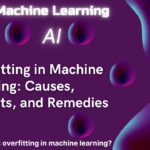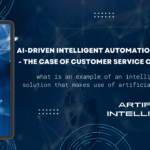what is the classification in machine learning?
Introduction
Machine learning, a branch of artificial intelligence, has gained immense prominence for its ability to enable computers to learn from data and make intelligent decisions. Classification, a fundamental concept within machine learning, forms the bedrock for a wide array of applications, from image recognition to medical diagnoses and beyond. In this comprehensive guide, we will dive deep into the world of classification in machine learning, exploring its nuances, various techniques, real-world implementations, and its profound impact on modern technology.
Chapter 1: Unpacking Classification
Defining Classification:
Classification is the process of teaching a machine learning model to categorize input data into predefined classes or labels. The goal is to develop a model that can generalize patterns from training data to accurately predict the labels of new, unseen data. Essentially, classification is akin to training a computer to make intelligent distinctions among different objects based on their distinctive features.
Importance of Classification:
Classification is a cornerstone of machine learning because it serves as a building block for numerous practical applications. By enabling computers to autonomously categorize data, it automates decision-making and empowers businesses, researchers, and industries to extract insights and make informed choices.
Chapter 2: Types of Classification
Binary Classification:
Binary classification is perhaps the most basic form of classification, involving the sorting of data into two distinct categories. Applications of binary classification range from sentiment analysis in natural language processing to medical diagnoses, such as classifying patients as having a certain medical condition or not.
Multi-Class Classification:
In multi-class classification, data points are categorized into more than two classes. This is commonly encountered when sorting objects into broader categories, such as classifying animals into mammals, birds, reptiles, and fish.
Multi-Label Classification:
Multi-label classification takes complexity a step further by allowing a single data point to be associated with multiple labels. Consider an image with multiple objects; a multi-label classifier should be able to identify and label each object present in the image.
Chapter 3: Methods and Techniques of Classification
Logistic Regression:
Logistic regression, despite its name, is a powerful technique for binary classification. It models the probability of a data point belonging to a particular class, making it a foundational algorithm for many classification tasks.
Decision Trees:
Decision trees utilize a tree-like structure to make decisions based on features of the input data. By recursively splitting the data into subsets based on informative attributes, decision trees arrive at a classification decision.
Random Forest:
A random forest is an ensemble method that combines multiple decision trees to make robust predictions. By aggregating the outputs of numerous trees, random forests mitigate overfitting and improve generalization.
Support Vector Machines (SVM):
SVM seeks to find a hyperplane that optimally separates different classes while maximizing the margin between them. SVM is especially effective for non-linearly separable data.
Neural Networks:
Deep learning, particularly convolutional neural networks (CNNs), has brought remarkable advancements in image classification. Neural networks are designed to mimic the human brain’s neural structure and excel at learning complex features from data.
Chapter 4: Applications of Classification
Image Recognition:
Classification is pivotal in image recognition, enabling computers to identify objects, scenes, or individuals within images. This has profound implications for industries such as autonomous vehicles, medical imaging, and surveillance systems.
Natural Language Processing (NLP):
In NLP, classification finds its application in tasks like sentiment analysis, spam email detection, and topic categorization. It enables computers to apprehend and interpret human language.
Medical Diagnosis:
Classification plays a crucial role in diagnosing medical conditions based on patient data like X-rays, MRI scans, and medical records. This facilitates early and accurate diagnosis, leading to improved patient outcomes.
Financial Fraud Detection:
Financial institutions rely on classification to detect fraudulent transactions, protecting individuals and businesses from monetary losses.
Ecology and Biology:
Classification aids in identifying species, monitoring ecosystems, and detecting diseases in plants and animals. It contributes to the understanding and preservation of the environment.
Chapter 5: Challenges and Future Directions
Data Imbalance and Bias:
One challenge in classification is dealing with imbalanced datasets, where one class is more prevalent than others. Addressing this imbalance is essential for accurate classification.
Interpretable AI:
As AI models become more complex, interpretability becomes a challenge. Ensuring that models provide explanations for their decisions is crucial, especially in critical applications like healthcare.
Advancements in AI Hardware:
The evolution of hardware, such as Graphics Processing Units (GPUs) and specialized AI accelerators, continues to accelerate the training and deployment of sophisticated classification models.
Conclusion
Classification, a cornerstone of machine learning, empowers computers to classify data into predefined categories, enabling applications across diverse fields. Its versatility, from binary and multi-class to multi-label scenarios, coupled with various techniques like logistic regression, decision trees, and neural networks, has transformed industries. The impact of classification on image recognition, natural language processing, medical diagnoses, and other domains is profound, paving the way for future advancements and innovations in AI. As technology evolves, classification will remain a crucial tool in our journey toward data-driven intelligence.










